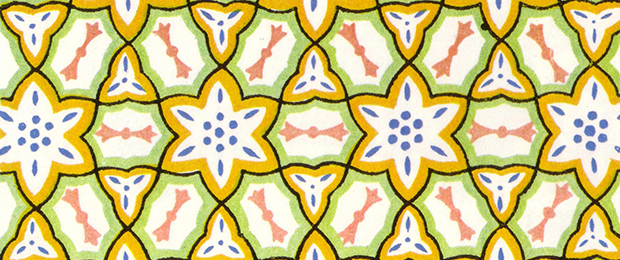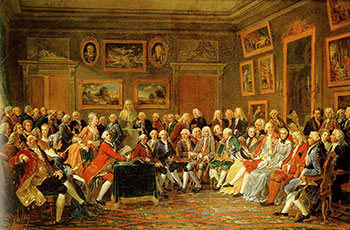Mary Treseler
Design Startup Showcase: Call for proposals
Get your new design product or prototype in front of industry movers and shakers at the O’Reilly Design Conference.
The O’Reilly Design Conference is just a few short months away, and we’re thrilled to announce that we’ll be hosting a Startup Showcase.
We’re seeking design startups that want to pitch judges and attendees — a broad selection of venture capitalists, leaders, and innovators from the investment and design communities. Successful applicants will receive free space in the exhibit hall at the Design Conference. Onsite, a panel of judges will vote for the best in show — winners will be announced on the keynote stage and will be featured in a post on oreilly.com.
Startup requirements include:
- Must be early stage, under three years.
- Your product should not yet be launched but within view of shipping an early version, or you may bring a fairly polished prototype (you can’t show up with a laptop displaying a 3D rendering).
- Your startup must be pre-Series A.
- Your product must be scalable, repeatable — i.e., not a consultancy.
Airbnb’s design approach
The O’Reilly Design Podcast: Katie Dill on designing for seven billion people, hiring good people, and the triforce.
Subscribe to the O’Reilly Design Podcast, our podcast exploring how experience design — and experience designers — are shaping business, the Internet of Things, and other domains.
In this week’s Design Podcast episode, I chat it up with Katie Dill, head of experience design at Airbnb. Dill talks about Airbnb’s values; the relationship between design, engineering, and product management; and what Airbnb looks for when hiring. Dill also will be keynoting at O’Reilly’s inaugural Design Conference.
Here are a few highlights from our conversation:
We have a few different ways of looking at the values that are behind our work and the way we do our work, and the team behind it. For a starting point, our company has core values. There are six points, which are actually on our website, that drive the values of all the people that work here. Some of which are things like championing the mission or embracing the adventure and having an entrepreneurial spirit.
Pretty much behind all the design work — and the thinking and processes of the people that work here — are three values we hold dear: being a host, simplifying, and every frame matters. Those three become really powerful in our design decisions and we translate that to our work. So, in being a host, we think about how we use the digital platforms that we design for to help people along in their journey, to invite them into an experience or a new part of the world. … Even our content choices, the language that we use, we try to make it really comforting, accessible, very human, just like a host would. That same thing goes with simplify. We want to be clear and to the point, and so we reduce the noise. Every frame matters references the frames of a storyboard, so every frame meaning that every point in the journey matters. … It’s not just about one screen that someone looks at or it’s not just about the app; it’s not just about one moment in time.
O’Reilly Design Conference Learning Paths
Our program will emphasize the full stack of skills designers need to work smarter.
Register now for the O’Reilly Design Conference, which will be held January 19-22, 2015, in San Francisco.
When reviewing the schedule for the O’Reilly Design Conference, you may wonder what shoe shopping with elders and the fisheries business have to do with design. Design’s impact is felt in every corner of our lives. And as a result, if you’re a designer you need to know more about more.
Remaining true to our roots, the O’Reilly Design Conference is all about learning new skills and bringing together different voices. We’ve planned several days of training for designers who want to increase their skill sets and widen their perspectives, including sessions on voice, industrial design, design thinking, prototyping, and running design reviews together with sessions like creative coding, and discussions on data, ethics, and privacy. Our program emphasizes the full stack of skills designers need to work smarter.
The keynotes we’ve lined up for Thursday and Friday morning will provide new perspectives, and a sense of how design is impacting business and society. You’ll hear designers talk about their experiences in the VC world and what it’s like when the experiences you craft live in both the physical and the digital worlds. After lunch on Thursday and Friday, the program gets broad. Whether you come for the conference, workshops, or intensive training days — or all three — I’ve laid out a few themes that can help to shape the sessions you choose to attend.
Here are some possible learning paths:
- I want to learn how to design for the digital and physical world
- I want to learn how to manage, lead, and have a larger impact within my organization
- I want to learn how to learn how to work effectively in cross discipline teams.
- I want to learn how to be better at user research and using data to create better products
- I want to learn how to apply my design skills to societal issues
Data, design, and intuition
The O’Reilly Design Podcast: Pamela Pavliscak on designing for happiness.
Subscribe to the O’Reilly Design Podcast, our podcast exploring how experience design — and experience designers — are shaping business, the Internet of Things, and other domains.
In this week’s Design Podcast episode, I sit down with design researcher and data scientist Pamela Pavliscak. Pavliscak is the author of Data-Informed Product Design, a free report from O’Reilly, and will be speaking at OReilly’s inaugural design conference.
Pavliscak talks about the delicate relationship between data and design, and why it’s not an either or proposition, as well as why designing for happiness is good for business.
Here are a few highlights from our conversation:
We like to think in dichotomies for when it’s either data or intuition. I think of it more like archaeology. Archaeology is not always about finding the big celebrities or what the important heroes and personalities of history do. It’s about learning more about the everyday practices of people. You have these clues, these traces left behind. Like archaeology, the science gets more sophisticated. Archaeologists have remote sensing and X-ray guns. Data scientists have algorithms and AI. The big difference is, these people that we’re learning about with data science are still around. We can learn about them in their own words and rely on them to share their feelings and their context. For me, it’s not really an either-or, but more of kind of an improv ‘yes-and’ kind of relationship.
I always suspected that delight, that concept that we have in design, wasn’t the full story of what made people happy. The small moments, the small pleasures certainly factored in, but it really seemed that the patterns fell into this kind of deeper meaning. I would see people for Humans of New York — this is the happiest site in the world for people. Not in the sense that it’s showing happy things, but because it makes people feel connected. It’s connected to a story, and it’s connected to a story that’s not complete. There’s still room for people. Those are the kind of moments that came out.
You’ll find that happier employees are more productive and they find more meaning in their work at the same time. Even way back to the 80s, I found some research on product detachment, and found that happiness and brand detachment are somehow linked together. There’s Martin Seligman’s PERMA, there’s subjective well-being scale, there’s Maslow’s hierarchy, which of course we all know by heart. Countries are applying happiness initiatives to supplement their GDP. We’re learning more about this through behavioral economics and these different models.
Take the design salary survey
Help us gain insight into the tools, work environments, and salaries of today's designers.
Designers are in demand.You’ve read the stories – IBM hiring 1,000 designers and investing $100 million in user experience design. Companies are fiercely competing for design talent, and poaching has become a way of life for large and small companies alike.
Given the tumultuous design landscape, we’re launching our inaugural Design Salary Survey to help shed some light on the discipline. The goal of our survey is to identify key trends, assess the tools market, and identify what skills correlate with higher salaries.
Additionally, our survey will shed light on design titles. There is plenty of debate over job titles in the field. The nebulous nature of job titles is both confusing and distracting — interaction designer, UX designer, experience designer, product designer, and the list goes on. Our survey will classify the titles by responsibilities, and identify trends, tools, and what pays (and what doesn’t).
We’ll also be taking a close look at the design tools market. New tools are emerging everyday — it’s no longer a one pony show with Adobe owning the market. The options are so abundant and overwhelming, Khoi Vinh recently conducted a survey of the design tools space. Survey results showed a mix of both newcomers and old-school tools, illustrating the dynamic nature of the market. Read more…
Design for the greater good
The O’Reilly Design Podcast: Gretchen Anderson on designing for social impact.
Subscribe to the O’Reilly Design Podcast, our podcast exploring how experience design — and experience designers — are shaping business, the Internet of Things, and other domains.
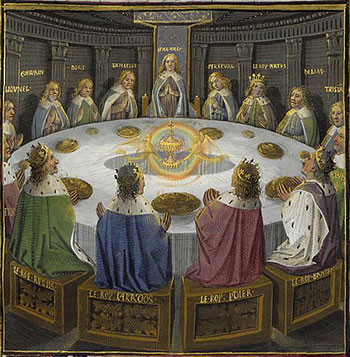 In this week’s Design Podcast episode, I sit down with designer Gretchen Anderson. Anderson is the author of the free O’Reilly report Designing for Social Impact and a program committee member for OReilly’s inaugural design conference, where she is also moderating a panel on designing with data for social impact.
In this week’s Design Podcast episode, I sit down with designer Gretchen Anderson. Anderson is the author of the free O’Reilly report Designing for Social Impact and a program committee member for OReilly’s inaugural design conference, where she is also moderating a panel on designing with data for social impact.
In this podcast episode, Anderson talks about design as a force to improve our lives and about approaching design as an inclusive discipline.
Here are a few highlights from our chat:
Forget the color palette conversations. Stop trying to make everyone understand the craft of design any more than they want to — just take your seat at the table. Greg Petroff talks about how designers can be a little bit paranoid by nature. I think that comes with the territory. There can be a lot of ‘us and them’ — I think it’s important to really drop that way of thinking. Not everyone does what you do, but that does not mean that you aren’t part of a larger ecosystem; you want to foster that creative part of bringing everyone together.
Design is about finding and testing and being able to hold a point of view on what people need and want, whatever your mission or enterprise is, and being someone who can reconcile constraints into something awesome, not just the sad compromise of everyone’s democracy. Have the bravery and the skills to hold that and the relentless passion and patience for refinement of an idea, even the bad ones sometimes.
Survey says: Be promiscuous with your design tools
A look at results and insights from Khoi Vinh’s design tools survey.
Editor’s note: Khoi Vinh is a member of the program committee for O’Reilly’s Design Conference. Registration is now open — reserve your spot today.
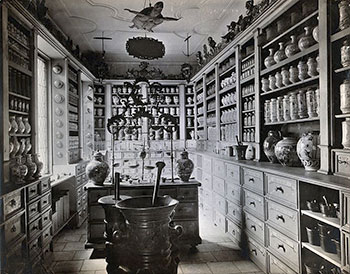 Khoi Vinh recently released his inaugural design tools survey. Vinh has been following the tools ecosystem for some time, and recently announced he will be joining Adobe. The survey focuses on six tasks designers manage: brainstorming, wireframing, interface design, prototyping, project management, and version control and file management.
Khoi Vinh recently released his inaugural design tools survey. Vinh has been following the tools ecosystem for some time, and recently announced he will be joining Adobe. The survey focuses on six tasks designers manage: brainstorming, wireframing, interface design, prototyping, project management, and version control and file management.
What jumped out at me? It’s a mixed bag, just as I expected. Pen and paper continues to be a key communication tool. I wasn’t surprised by the popularity of HTML and CSS, or Invision, but I was surprised by the lower ranking for Axure. It’s refreshing to see the investment in the design tools space, even if it the choices can seem overwhelming. Let me know what you think in the comments below or through Twitter (@marytreseler).
I sat down with Vinh to discuss the tools market and, specifically, the results and thinking behind his survey.
What prompted you to develop the tools survey?
The past two or three years have just been incredibly interesting for software geared toward digital designers. We’ve seen a slew of new contenders, and a whole new category — UX prototyping — where we get brand new apps seemingly once a month. So, I wanted to try to shed some light on all of this activity and get a sense of how these new applications are getting adopted, and by whom.
What were your findings?
At a high level, I found that it’s a very diverse market, which is itself a real statement. A decade ago, most everyone used Adobe’s tools for almost everything. Now you have up-and-comers like Sketch (from Bohemian Coding) and InVision both really taking hold in the market. Some categories have no clear winner, like prototyping. I think it’s all really exciting. Read more…
Designing responsibly in the attention economy
The O’Reilly Design Podcast: Tristan Harris on design ethics and leaving things better than you find them.
Subscribe to the O’Reilly Design Podcast, our podcast exploring how experience design — and experience designers — are shaping business, the Internet of Things, and other domains.
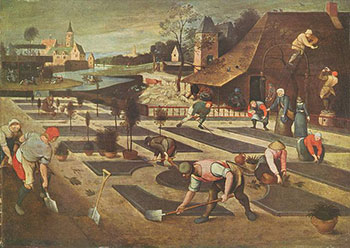 In this week’s Design Podcast episode, I sit down with Tristan Harris, design thinker, entrepreneur, and philosopher at Google, and speaker at O’Reilly’s first design conference.
In this week’s Design Podcast episode, I sit down with Tristan Harris, design thinker, entrepreneur, and philosopher at Google, and speaker at O’Reilly’s first design conference.
Harris talks about Design for Time Well Spent, the Doubt Club, and why it’s important to leave things better than you find them.
Here are a few highlights from our chat:
I think one aspect of why designers need to design responsibly is this new scale, this new proportion of influence and impact — because one choice about whether something takes five seconds of someone’s life versus one second of someone’s life gets multiplied by a billion people.
Even when the intention is very good and very positive, it devolves into what I’ve called the ‘race to the bottom of the brain stem’ to seduce people’s psychological instincts. The best way to get time from people, the best way to seduce or get their attention, is to use people’s psychological biases in a way that gets them to come back or stay.
Part of being ethical means being deeply thoughtful, comprehensive — not just optimistic about the one goal that you have, but to see where that goal might break down.
Every (successful) company is a service company
Designers are helping to shape the businesses, products, and services in our changing economy.
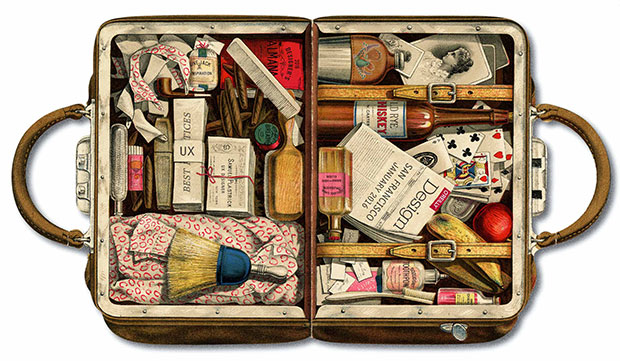
Register now for the O’Reilly Design Conference, which will explore the evolving role of design in business and society along with the tools designers need to shape the next generation of products and services.
Loosely defined, service is the relationship between consumer and company. There are traditional service companies, such as hotels and transportation companies, and their modern counterparts Uber and Airbnb.
Then there are companies that are changing their identities from product companies to service companies, with varying degrees of success: for example, IBM, morphing from hardware to services, and Adobe, moving its software model to a cloud-based, subscription-based service. Whether you’re new to the game or established, almost any product today must have a service aspect.
Why does this matter — and what does it mean for designers?
Tim O’Reilly wrote a recent piece on how the economy is being shaped by software and connectedness. He explained:
One way to think about the new generation of on-demand companies, such as Uber, Lyft, and Airbnb, is that they are networked platforms for physical world services, which are bringing fragmented industries into the 21st century in the same way that ecommerce has transformed retail.
The evidence is clear: we’re living in an attention economy, with thousands of devices and companies competing for eyeballs. Our products are now connected and smart, and the consumer-product relationship is long term, with data fueling the courtship. It’s no longer enough to have a great product — it needs to be coupled with a great service. Service is at the heart of any user experience, and designers are crafting this experience, forging the connections between products and consumers. Read more…
Design is how users feel when experiencing products
The O’Reilly Design Podcast: Cindy Alvarez on emotion, user research, and why Craigslist is great design.
Subscribe to the O’Reilly Design Podcast, our podcast exploring how experience design — and experience designers — are shaping business, the Internet of Things, and other domains.
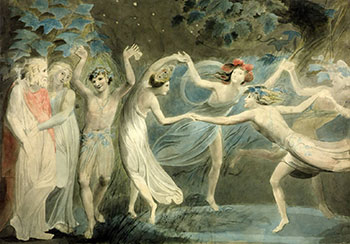 In this week’s Design Podcast episode, I sit down with Cindy Alvarez, a designer at Microsoft, author of Lean Customer Development, and member of our program committee for O’Reilly’s first design conference.
In this week’s Design Podcast episode, I sit down with Cindy Alvarez, a designer at Microsoft, author of Lean Customer Development, and member of our program committee for O’Reilly’s first design conference.
Alvarez talks about how design is changing, how the approach to design at Microsoft is changing, and user research misperceptions and challenges. She also offers advice to those who are insisting all designers should code.
Here are a few highlights from our chat:
Steve Jobs has said that, “Design is not how it looks, it’s how it works.” I would go one step further and say, “Design is how you work.” When you’re using something, how do you feel … How are you feeling more capable — do you feel smarter? Do you feel stronger? Do you feel stupider? Design is how you feel when you are using things or having experiences.
The ‘butt-brush’ effect comes from the wonderful Paco Underhill book Why We Buy. … Specifically, the butt-brush phenomenon is people looking at products that they really wanted to buy, but the store layout made it so people were bumping into them. That was such a strong push to get them to abandon what they were doing … that they’d just get up and walk away. He theorized about people feeling vulnerable, and undoubtedly there’s some sort of evolutionary thing about woolly mammoths sneaking up on us or something. I think it’s just, on a more base level, people feel clumsy. They feel fat, they feel clumsy and awkward, and we don’t like that at all.
 Mary Treseler is Director of Strategic Content at O'Reilly Media, Inc. She acquires, curates, and edits design content, when not writing about it herself. Her experience with design-related topics includes editing "Lean UX" and "Designing Interfaces" as well as launching "The Lean Series" with Eric Ries. Mary has more than 20 years of experience working in technology publishing; her introduction to the design discipline began in 1993 with Jakob Nielsen's "Usability Engineering." A Boston native, Mary lives by the ocean in South Dartmouth, MA.
Mary Treseler is Director of Strategic Content at O'Reilly Media, Inc. She acquires, curates, and edits design content, when not writing about it herself. Her experience with design-related topics includes editing "Lean UX" and "Designing Interfaces" as well as launching "The Lean Series" with Eric Ries. Mary has more than 20 years of experience working in technology publishing; her introduction to the design discipline began in 1993 with Jakob Nielsen's "Usability Engineering." A Boston native, Mary lives by the ocean in South Dartmouth, MA.


